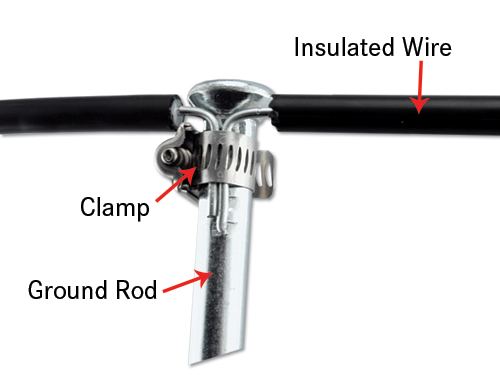A common question: “I can’t get any power on my fence but my energizer seems to be working fine. My animals are walking through the fence.”
Answer: Many times the problem ends up being that the energizer ground system is inadequate because copper ground rods have been used. Why?In electric fence applications, copper corrodes rapidly, usually within 2 months to 2 years due to direct current (DC) voltage. When copper corrodes on the surface of the energizer ground rods or on connecting wires, it does not allow electricity to flow. It is similar to having a kink in a water hose that allows only a limited flow or no flow of water beyond the kink.
The solution is to install galvanized ground rods and to connect them using only galvanized wire. The amount of grounding required is dependent on the energizer’s size. The common rule of thumb is a minimum of 3 feet of galvanized ground rod per maximum joule of output. (A 3 joule unit needs 9 feet of ground rod.) The ground rods should then be placed in a linear line spaced apart by 1.5 times the length of the rods being used. (Example – 6 foot rods should be placed 9 feet apart.)
When connecting the galvanized ground rods together we suggest not only using galvanized wire but insulated galvanized wire. Why?
A ground wire that connects ground rods together will usually have direct soil contact. Even the best galvanized ground wire will corrode over time. Thus simply by using insulated galvanized wire years of problem-free ground systems can be attained.



